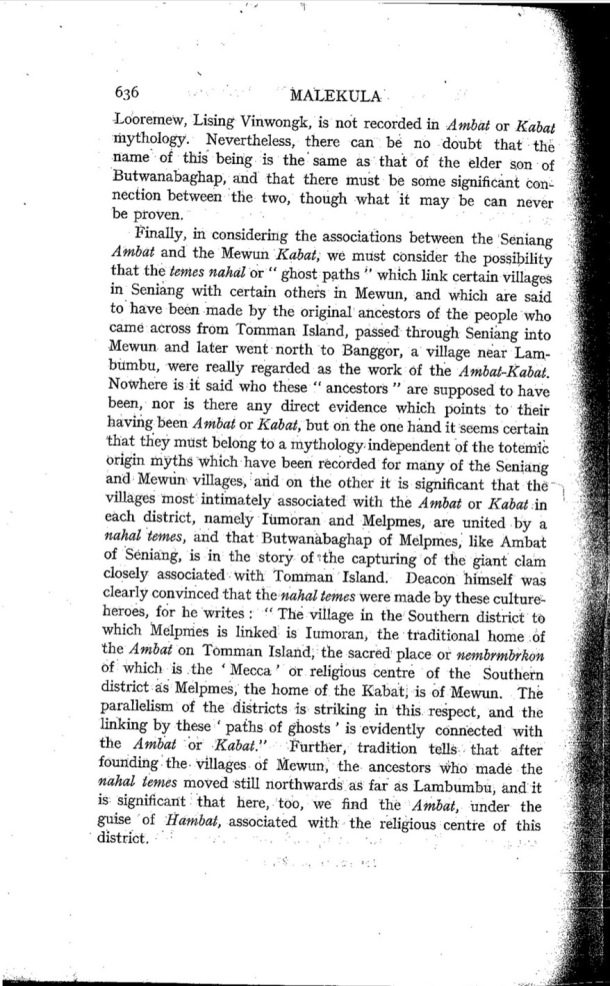|
|  [Note: this transcription was produced by an automatic OCR engine]
636 MALEKULA l
Looremew, Lising Vinwongk, is not recorded in Ambat or Kabul
mythology. Nevertheless, there can be no doubt that the
name’ of this being is theisame as that of the elder son of
Butwanabaghap, and that there must be some signiï¬Åcant con~
nection between ‘the two, though what it may be can never
be proven,
Finally, in considering the associations between the Seniang
Ambal and the Mewun Kabul, we must consider the possibility
that the lemes nahal or “ ghost paths " which link certain villages
in Seniang with certain others in Mewun, and which are said
to have bcen made by the original ancestors of the people who
came across from Tomman Island, passed through Seniang into
Mewun and later went north to Banggor, a village near Lam»
bumbu, were really regarded as the work of the Ambal-Kabnt.
Nowhere is it said who these " ancestors " are supposed to have
been, nor is there any direct evidence which points to their
having been Ambat or Kabai, but on the one hand it seems certain
that they must belong to a mythology, independent of the totemic
origin myths which have been recorded for many of the Seniang
and Mewiin villages, and on the other it is Signiï¬Åcant that the
villages most intimately associated with the Ambat or Kabul in
each district, namely Iumoran and Melprnes, are united by a
nahal flames, and that Butwanabaghap of Melpmes, like Arnbat
of Seniang, is in the story ot"the capturing of the giant clam
closely associated with Tomman Island. Deacon himself was
clearly convinced that the mzhal temes were made by these culture~
heroes, for he writes : " The village in the Southern district to
which Melpmes is linked is Iumoran, the traditional home of
the Ambat on Tomman Island, the sacred plaoe or nembrmbrkon
of which is the ‘Mecca’ or religious centre of the Southern
district as Melpmes, the home of the Kabat, is of Mewun. The
parallelism of the districts is striking in this respect, and the
linking by these ‘ paths of ghosts ' is evidently connected with
the Ambhz or Kabut.â€ù Further, tradition tells that after
foundingithe villages of Mewun, the ancestors who made the
nahal tenses moved still northwards as far as Lamhumbu, and it
is signiï¬Åcant that here, too, we ï¬Ånd the Ambat, under the
guise of Hambal, associated with the religious centre of this
district.
"
t ._
>_
iar:
,1
ow
“_,
. v
|